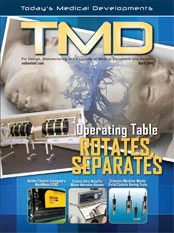
I recently heard a story about an orthopedic surgeon that designed a rib-replacement device some years ago for children. According to the surgeon, designing the device was easy. However, trying to find a company willing to manufacture the device was very difficult. At that time, only one child stood to benefit from the titanium rib, suggesting limited, if any, financial incentive for the manufacturer.
While the story ends on a good note, it took the support of an academic health science university for the project to proceed. Once that hurdle was crossed, it took an additional 13 years to gather enough young patients with rare diseases that were willing to test the artificial titanium rib in order to gain FDA approval. While I'm certain it was a long, hard journey, there are now more than 300 young people living healthy, normal lives thanks to someone with this vision and others willing to support that vision regardless of a financial payback.
Unfortunately, in today's world of advanced medical technology, few devices are made exclusively for children. Doctors are forced to use medical devices approved to treat adults on children by making them smaller, and sometimes by mechanically modifying them to fit smaller bodies. Even though this has become a widespread practice, doctors admit it is risky.
There is no doubt that designing and developing medical devices for children is a challenge; however, the real problem is the cost. Companies sell fewer devices for children than adults, and it takes the same amount of extensive and costly FDA testing to obtain government approval for a child's device as it would for an adult's device. Many medical device manufacturers decline to manufacture medical devices for children because the return on investment and anticipated profit goal is less than desirable.
I understand that all companies need to make a profit to remain in business, but there is also an ethical responsibility that medical device manufacturers need to consider. I personally believe it's a shame that Congress got involved with this last year by introducing legislation permitting pediatric device manufacturers to set prices high enough to make a profit, providing no more than 4,000 devices that are distributed annually. As I see it, when we start putting short-term financial gains ahead of providing long-term opportunities for a child to lead a healthy, normal life, we are relinquishing the core values of the medical manufacturing industry.
I would be willing to bet that if a CEO from a major medical manufacturing company had a child or a grandchild in need of a pediatric device, the cost associated with designing and machining that device would not be an issue.
When it comes to improving a young life, it's time to look beyond the bottom line.

Explore the April 2008 Issue
Check out more from this issue and find your next story to read.
Latest from Today's Medical Developments
- Humanoid robots to become the next US-China battleground
- Air Turbine Technology’s Air Turbine Spindles 601 Series
- Copper nanoparticles could reduce infection risk of implanted medical device
- Renishaw's TEMPUS technology, RenAM 500 metal AM system
- #52 - Manufacturing Matters - Fall 2024 Aerospace Industry Outlook with Richard Aboulafia
- Tariffs threaten small business growth, increase costs across industries
- Feed your brain on your lunch break at our upcoming Lunch + Learn!
- Robotics action plan for Europe





